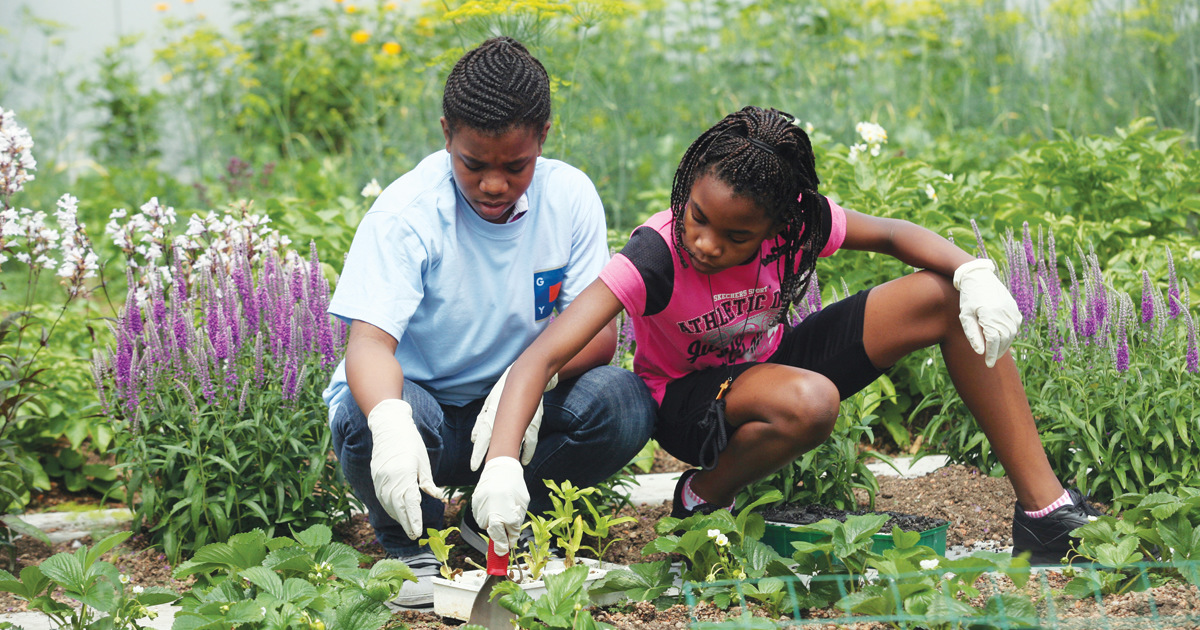Today, young people lead a very different lifestyle: Walks have been replaced by car rides; recess and physical education have been squeezed by academic expectations; busy families and the rise of convenience food have led to more processed foods; youth spend more time sedentary in front of screens.
That's the bad news.
The good news: Education and role modeling can help reverse these trends.
Science, Technology, Engineering and Math—the subjects known as STEM—can provide pathways to help achieve healthy eating and physical activity (HEPA). Programs often provide both kinds of activities; combining them makes great use of program resources and time. HEPA-focused STEM activities can provide the motivation, information and tools young people need to live a healthier lifestyle.
Five STEM Ideas to Boost HEPA
1. Anatomy Academy
Is the knee bone connected to the thigh bone? How does food give us energy? Our bodies are amazing, and the basics of a healthy lifestyle must be built on understanding how our bodies work. From digestion to skeletons, a wide range of STEM activities is available to teach young people how their bodies work.
Books: Little Explorers: My Amazing Body by Ruth Martin | The Magic School Bus Inside the Human Body by Joanna Cole and Bruce Degen | Grossology and You by Sylvia Branzei | Oh, Yuck! The Encyclopedia of Everything Nasty by Joy Masoff
Web Resources: Science Kids | 5 Major Body Systems with Brainpop Jr. Lesson Plan | Easy Science for Kids
2. Nutrition and Calories
What should I be eating? Human beings are omnivores—from apples to zebras, we can technically eat it if it's edible. However, not all food is created equal. Candy and Brussels sprouts provide our bodies with very different nutrition. Nutrition is a science. The goal is to provide activities that give young people the tools they need to understand food groups and a balanced diet. An understanding of calories, fat, carbohydrates, fiber, sugar, and vitamins empowers young people to make good food choices.
Web Resources: The United States Department of Agriculture's Choose My Plate
3. Food Labels
We see food labels every day on the packaging of the food we buy. They're free to collect and full of great STEM information, including math and chemistry. Food labels can be a great resource for teaching about calories and serving size.
Activities:
Have young people use food labels to identify the ingredients in different foods. Then, invite them to analyze the ingredients to determine if a food is healthy (less than 35 percent fat and less than 35 percent sugar).
A great way to visualize why we should all be eating less processed foods is to provide sugar or sugar cubes (three grams) and have young people weigh or count out the amount of sugar in popular drinks and snacks, based on the sugar content listed on their food labels.
4. The Games We Play
Healthy eating is only part of a lifestyle that keeps bodies in tip-top shape; we also need to move and be active. Many STEM activities based on the natural world, such as looking for rocks or learning about the weather, are enhanced by a walk outside. However, physical activity does not have to be limited to the natural sciences. Nearly all STEM activities and concepts can be reviewed and reinforced through activity. Be inventive and try to incorporate a degree of active motion in every STEM activity! Invite young people to actively participate in learning about:
- Electricity, by playing a game of electron tag.
- Liquids and gases, by acting out the movement of molecules in a solid (vibrating in place), a liquid (moving slowly past one another), and a gas (running around really fast).
5. Gardens
Growing plants is a wonderful way to get young people outside and connected to fresh fruits and vegetables.
Activities:
If you're lucky enough to be at a location where you have dedicated outside space, build a small raised garden bed. After it's set up, it requires very little work and provides great teaching opportunities. Plants may be raised almost year-round with careful planning. Nothing motivates young people to eat more veggies than growing their own!
Options for growing food are available for nearly every facility and condition. Even without facilities for a garden, young people can still be involved in the wonder of growing food. Use small pots filled with soil or jars with damp paper towels placed within to grow bean sprouts and mushrooms.
If growing plants to harvest is just not feasible in your location, reverse the process. Provide avocados, whole pineapples, or whole carrots for a healthy snack. After eating, place the avocado pits or pineapple and carrot tops in jars with wet paper towels and allow them to sprout. By tending their sprouting leftovers, the group eats a healthy snack, sees that these foods come from a living plant, and discover what plants need to live.
STEM can provide the knowledge young people need to successfully implement a lifelong connection to HEPA. For additional guidance on incorporating HEPA into your program check out the NAA Healthy Eating and Physical Activity (HEPA) Out-of-School Time Standards.
Contributed by Andy the Science Wiz, NAA STEM Specialist Andy Allan.
Photo courtesy of David Pierini.

